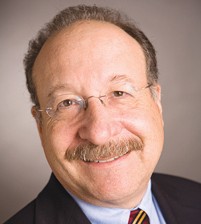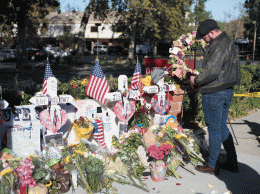
Henry Dubroff
Sexual assaults on campus. Deltopia riots. Cringeworthy rankings as a top party school. The annual hold-your-breath Halloween chaos.
None of this horrible behavior has stopped UC Santa Barbara from recruiting the best and brightest students and faculty to Isla Vista.
But a murder spree by Elliot Rodger, a mentally unstable 22-year-old, changed all of that. Although Rodger was not a UCSB student — his credentials were far short of those typically required for admission to the world-class university — his murder of six innocent people has shocked the UCSB community and the nation.
Isla Vista is no longer an island.
Viewed narrowly, Rodger’s rampage was the result of a tragically ineffective response by family, mental health professionals and the Santa Barbara County Sheriff’s Office. More facts will hopefully provide better understanding of what went wrong.
But viewed through a broader lens, it is clear that things must change in the student community next to UCSB. Isla Vista has been thrust into the national spotlight for something far more negative than reputation as a party school. Violent sexual assaults, street riots and now this tragedy mean that Isla Vista will increasingly be viewed as a place that is unsafe for parents to send their children, especially young women. The community is home to not only UCSB students, but a large population of Santa Barbara City College students as well. SBCC is ranked as the No. 1 community college in the country, which makes it a great feeder school for UCSB, a world-renowned research university.
But the rise of violence in Isla Vista is at odds with its a reputation as a place that welcomes students from diverse backgrounds.
That needs to change.
After talking to a number of community leaders and stakeholders informally and via email over the past few days, I hear more and more calls for serious changes in Isla Vista.
Among people stepping up to debate the issue is Congresswoman Lois Capps, a Santa Barbara Democrat whose late husband Walter Capps was a member of the UCSB faculty.
Capps indicated that she would like to “convene a meeting of students, county officials, law enforcement personnel and UCSB and SBCC leadership in conversation about what changes can be explored.” She said it is important for key stakeholders to work together ways to “make Isla Vista a safe and welcoming place for everyone.”
My own view is that we need to stop pretending that Isla Vista is a college town like Chapel Hill or Boulder and recognize that it is uncharted waters from a governance perspective, particularly on weekends. As detailed in our reporting today, Isla Vista is a no-mans land that doesn’t come under the jurisdiction of any city government, because no municipality has wanted to step up and take the town under its wing. At the same time, Isla Vista is not part of the UCSB campus either.
We need to recognize that it will take time, money and leadership to make the necessary changes. Here are some ways that we can begin to reform Isla Vista:
• Bring Isla Vista under a code of student conduct that’s enforced by UCSB and SBCC, and in the case of criminal behavior, referred to the Santa Barbara County Sheriff’s Office. Consequences for bad behavior have to be part of the mix.
• Convene experts to advise on how to make the current environment and future building more conducive to a family-friendly atmosphere.
• Get a personal commitment from UCSB and SBCC leadership that there will be much greater community engagement in Isla Vista from top school administrators.
• Finally, we need a vastly expanded connection between the university and the rest of Santa Barbara County. Here, UCSB could take a cue from Cal Poly San Luis Obispo President Jeffrey Armstrong and CSU Channel Islands President Dick Rush. Both have become essential members of their local communities.
Finally, a lesson from the annals of business. For very large organizations, the question of reputation risk is always present.
We’ve just come through a financial crisis where the faltering credibility of our biggest banks pushed them to the brink of failure. General Motors today faces its most serious reputation challenge in decades over an inexpensive ignition switch whose failure killed 13 people.
UCSB can overcome this threat to its reputation. But it will take bold and far-thinking actions to make Isla Vista a safer and more welcoming place.
• Contact Henry Dubroff at hdubroff@pacbiztimes.com.






 Print
Print Email
Email


















Henry,
I commend you on a nicely balanced piece that talks about all the things nobody else is talking about. Isla Vista was/is a dirty little secret waiting to explode. It is something that has been tolerated. You mention the missed opportunities of the Santa Barbara police, the lack of mental health resources. These all contributed in part to the tragedy that played out in IV. While Marissa Wenzke of PCBT did focus on a single politically hot weapon in order to fuel a fire, ignoring the knife(s) used in the heinous murder of three of the victims and the vehicle used to insanely run over more innocents, I personally appreciate the more balanced view you offered. Until we address the underlying causes of these mass murders, what weapon is used will be of no consequence. We see time and time again when these cowards are confronted mid slaughter that they nearly always commit suicide as they are the ultimate predator/coward. If more people could stand up to these murderers, the death toll would certainly decline.